Introduction to pathologies in soccer players
Injuries in soccer remain a major challenge for players, whether amateur or professional...
Osteopath for sports in Versailles
A sports osteopath in Versailles to treat athletes:
For a few years, your osteopath ran at the national level in two disciplines: cross country and 1500 m. She understands the demands of training, the search for performance and the right level. Following numerous injuries, Marie Messager was led to consult an osteopath who put her back on her feet a few days before the French championships. It is thanks to this meeting that she decided to work to help athletes and thus became a sports osteopath. Practicing running, swimming, jumping rope, volleyball, rollerblading, hiking, biking, etc., your osteopath understands the daily life of a sportsman and will be able to advise you at best to prevent and treat injuries as well as to improve the performance of each one.
Why consult a sports osteopath in Versailles in the Yvelines?
Main reasons for consultation:
The reasons for consultation are very vast in this field, we can consult for a joint, ligament, muscle or tendon problem.
Here are the main ones found in sports osteopathy:
- Tendonitis (tennis elbow, patellar syndrome, wiper syndrome)
- Osteoarthritis
- Contracture, elongation, muscle tear
- Tennis leg
- Pathologies of the rotator cuff muscles
- Periostitis
- Plantar fasciitis
- Cervical pain, back pain, lumbago
- Digestive disorders
Consult an osteopath in Versailles in the Yvelines after a trauma:
Short, medium and long term sprain
Many people are unaware that the osteopath has a place in the immediate management of a sprain. This allows to save a considerable amount of time in the recovery of the athlete. Of course the short, medium and long term management is very different. If your osteopath feels the need, he or she will refer you to your doctor for further tests.
3 months after an operation or a fracture
With the exception of kinesiotaping, which can be done immediately to improve drainage, osteopaths do not treat patients less than 3 months after an operation or a fracture. A treatment with your physiotherapist is possible and is often highly recommended, but no osteopathy within 3 months!
An osteopathy consultation in Versailles for prevention:
Even if you don't feel any pain, it doesn't mean that everything is fine. The body is well designed and adapts when faced with an imbalance. The body sets up compensation strategies that last more or less time. You can therefore spend several months or years before the problem occurs. But as your life goes on, you undergo small traumas, for example you miss a step, you carry your bag more on one shoulder than the other, you carry your child always on the same side or you work on 2 screens and do not have them in front of you, etc., all this will generate mini imbalances which could be a source of problem. The goal of osteopathy is to detect everything that is wrong, thanks to a consultation where your practitioner will test you from head to toe, and to treat the causes of these imbalances but also the consequences in order to rebalance you as well as possible.
Sports osteopathy in Versailles to improve performance:
In the same logic as prevention, your osteopath will try to detect any imbalances that could alter your performance and treat them.
But your osteopath also has a role of advice on
- Physical preparation(muscle strengthening exercises, stretching, isokinetic exercises),
- equipment (shoes, compression, etc.)
- natural treatments (green clay poultice, essential oils, cryotherapy, etc.).
- Nutrition
Who can consult a sports osteopath in Versailles in the Yvelines?
A sports osteopath is an osteopath who specializes in sports, so your osteopath can take care of any patient, sports or not, but concerning sportsmen:
- The different training courses followed by your osteopath (see below) allow him to welcome all types of athletes in his office, whatever their level or sport (collective or individual)
- Sporting children : Your osteopath also trained in pediatrics for three years, she is able to take care of sports children. The field of sport in pediatrics is very poorly known and this is why your osteopath has specialized in this field to promote sport among young people, to avoid a stop of sport for injuries and to prepare the sportsmen of tomorrow.
Your osteopath in Versailles is specialized in sports:
Always with the aim of giving the best advice to his patients, based on the latest research, your osteopath has therefore followed numerous training courses:
Kinesio taping training, expert level
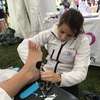
As he approaches his osteopathy diploma, your osteopath has also followed a training course in kinesiotaping. These are colored bands that can be seen on many sportsmen and women and that aim to support a muscle, a ligament, a tendon, a joint and to improve the veno-lymphatic drainage. The application of these bands may seem simple but it requires a perfect mastery of human anatomy but also the technical gesture of the application. Indeed, a bad application of the bandage can be harmful. In order to perfectly master this approach, your osteopath has followed all the training courses of kinesio taping France (the only training in France recognized by Kenzo Kase, creator of kinesio taping) and has become an expert in kinesio taping (KT3).
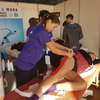
University Diploma of Emergency and Field Management in Sports
This diploma authorizes her to intervene in all types of sporting events. During this diploma in Bordeaux, she was able to perfect her knowledge in strapp, immobilization, treatment of sports injuries and first aid. But she also studied the performance of the athlete and all the factors that allow to optimize it (posture, proprioception, good dental health, nutrition, etc).
Osteopathy and high level sport
Your osteopath has also followed a training course directed by Pascal Ceyrat to master the requirements of osteopathic treatment of high level athletes.
University Diploma in Osteopathy of Sport in Avignon
Although your osteopath already has a DU in sports, he chose to return to school for a year to enrich his knowledge in the sports world and to be up to date with the latest research. The choice of the DU in Avignon rather than in Paris was made because of the quality of the speakers present in Avignon who allowed your osteopath to specialize even more in certain fields with for example :
Athletics and reathletics:
Amandine Lacroix, sports doctor of the French athletics team, transmitted her knowledge in the field of athletics but she was also in charge of training the students of the DU of osteopathy of the sport in biomechanics, reathletization and isokinetism as well as in overtraining
Soccer and high level

Marcel Ferret, doctor of the French soccer team in 1998, during a whole seminar made us discover his passion for sports medicine and more particularly the care of footballers but also of all sportsmen and women, adults and children.
Running on the forefoot and the EAD concept
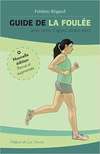
Frédéric Brigaud is at the origin of the EAD concept and has worked for many years on forefoot running. Following his training, as well as the reading and application of his books, your osteopath masters the biomechanics and posture of running and is able to guide you and help you during your transition to forefoot running
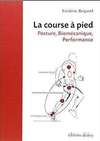
Rugby and team sports

Michel Riff, physiotherapist-osteopath of the XV de France from 2007 to 2011, allowed us to understand the constraints of the high level and the requirement of the care of the players but also allowed us to discover the osteopathic environment in rugby and more generally in team sports.

Physiology and nutrition
Stéphane Nottin, teacher in STAPS at the Avignon University, allowed your osteopath to deepen his knowledge in physiology of the sportsman, in nutrition of the sportsman but also concerning the limits of the extreme sports.
Many other topics such as doping, strapping, taping, stretching were also covered in this training.
FIFA Diploma in Football Medicine
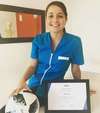
Your osteopath takes care of many footballers and soccer clubs and in order to take better care of them, she decided to follow the FIFA courses in Football Medicine online and obtained her diploma after validation of all the required modules.
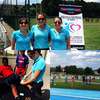
GMC - Global Mobility Condition
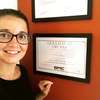
It is an approach developed by the medical staff of the French national team (2007-2011) in order to prevent injuries to athletes. Because prevention is better than cure, your osteopath decided to follow this training at the CREPS of Font Romeu in order to identify the profiles at risk of injuries thanks to some tests. This training allowed him to discover protocols to advise the patient to improve their physical condition and to work on their weak areas.
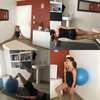
Running shoe training
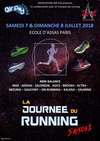
During a whole weekend organized by Air Pod, your osteopath followed with many podiatrists a training in the shoes of run. Many brands were present (salomon, nike, addidas, brooks, hoka, new balance, altra, on running, etc) to present their last models, to present us their technologies and to make us try their shoes on a track. Your osteopath has chosen to do this training in order to know what is done on the market to best advise patients in their choice of shoes. Indeed, many pathologies of the runner occur simply because of a bad shoe.
University Diploma of Anatomy at the Faculty of Medicine of Paris Descartes
In order to treat any patient, it is necessary that the anatomy be mastered and this is particularly essential when treating an athlete. Indeed, like precision mechanics, everything must be perfectly adjusted in him.

This is the reason why, 3 years after her osteopathic diploma, Marie Messager decided to take a difficult year of anatomy to obtain this diploma following dissections as well as the validation of orals, writings and a dissertation and especially in order to perfectly know each part of her patients' body.
Your sports osteopath also takes care of many sports clubs and events:

Your osteopath takes care of many sports clubs in the field of soccer, athletics, krav Maga, grappling, etc. President of the company Health Sport & Work and co-founder of Team Sport Santé, Marie Messager brings in many osteopaths, osteopathy students and other health professionals to sports events and companies. About thirty sports events such as the Disney run, the Olympics of living together in Versailles are covered each year...
Sports osteopathy blog
Among the causes of chronic talalgia, atrophy of the plantar fat pad remains under-diagnosed. Yet this anatomical structure is...
Bouldering is a fascinating discipline that intensely engages the whole body and mind. Unlike classic wall climbing...
